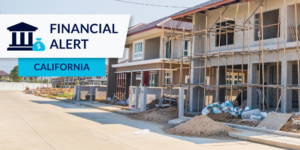
In a rarely seen move, real estate investment company D&M Investments Holdings, Inc. was forced into involuntary Chapter 11 bankruptcy proceedings on September 30, 2021, by three of its creditors — and the fate of the company’s unfinished Southern California development could be in significant distress.
D&M Investments Holdings owns the 191-acre Oakview Estates lots in Bradbury, California, less than 30 miles from Los Angeles, and has been trying to develop the property for a number of years.
The three petitioning creditors — CSK Global Inc., Hummer Construction, and AZ All American, LLC — are claiming $239,000 total in non-payment. While CSK Global and AZ All American are claiming a total of $20,000 for advancing lenders fees, Hummer Construction is claiming $219,000 for grading services.
However, according to court documents, as recently as May 2021, D&M owed its lenders $17,745,362.81.
According to a 2018 plan put together by the city of Bradbury, the Oakview Estates property was at one point intended to be developed into “nine new residential estates, a water storage tank, a loop access road, three bridges, and no-build open space areas,” with the necessary work including “developable areas of the residential lots (building pads, driveways, and cut/fill slopes), road, and water tank/fire protection staging, and fuel modification zones for fire protection.”
The Oakview Estates property also dealt with a mechanics lien claim by Michael Baker International, Inc. filed on May 28, 2021, alleging $15,368.28 in non-payment for environmental consulting services — which as of publication, had not clearly been enforced nor released.
With the state of the property and the owner, it’s difficult to say whether construction will move forward at any point in the near future for the Oakview Estates property.
Most recent involuntary bankruptcy is D&M’s second
Surprisingly, this action is the second involuntary bankruptcy procedure that D&M Investments Holdings has been through in the last few months.
The same group of petitioning creditors — CSK Global, Hummer Construction, and AZ All American — previously filed an involuntary Chapter 11 bankruptcy petition against the company on August 2, 2021, with the action directly leading to the company’s current situation.
According to the prior filing, D&M Investments Holdings owed $17,745,362.81 to its lenders as of May 18, 2021 (as well as the outstanding non-payment to the three named creditors).
However, the lenders agreed to dismiss the case and accept only $17,000,000 as long as the debt was paid no later than September 30, 2021, waiving the remaining portion of the money the company was owed.
As per the notice of dismissal, D&M Investments Holdings had entered a loan funding agreement to borrow $360,000,000 with which it would repay the lenders and then develop the Oakview Estates property.
However, it appears that the creditors did not receive this payment in time, as the three petitioning creditors moved to file on September 30, 2021, the day that the payment had come due.
Involuntary bankruptcy rarely comes up — but it can be effective
Involuntary bankruptcy is not a common aspect of construction disputes, but it can be a particularly effective way of securing payment.
“In short — they work,” said construction lawyer Mazyar M. Hedayat regarding involuntary bankruptcy petitions. “The reason is no mystery: unlike most legal proceedings, Bankruptcy requires Debtor transparency and oversight by the Court and a United States Trustee.”
“There is less opportunity for chicanery on the part of the Debtor, and Creditors can file claims to be reviewed by a neutral party,” Hedayat continued. “All valid claims must then be paid by the Debtor in order for the reorganization to work.”
Typically, this move is taken if creditors believe that debtors are able to pay debts but have chosen not to do so. If creditors have not been able to get paid for their work on a project — and don’t think that they will be paid without bankruptcy proceedings — they can file a petition to force the debtor into involuntary bankruptcy.
The number of parties involved in this process is also important for the procedure — a single creditor can file the petition if there are less than 12 qualifying creditors involved in a dispute against a debtor, but at least three must join the petition if there are 12 or more creditors involved.
Though the process is fairly rare for construction disputes, Levelset coverage in recent months has pointed out a few notable examples of involuntary bankruptcy.
August 2021 saw Gilbane Federal file a petition to force United Infrastructure Projects FZCO into involuntary Chapter 7 bankruptcy over an $8,862,495 claim, claiming that the company is “generally not paying its debts as they become due.”
Similarly, May 2021 saw three companies — Permasteelisa North America Corp., Construction Realty Safety Group, Inc., and Domani Inspection Services, Inc. — lead a petition to push Park Place Development Primary, LLC into involuntary Chapter 7 bankruptcy, seeking $25 million in non-payment on the project while the company also dealt with at least $117 million in defaulted debts.